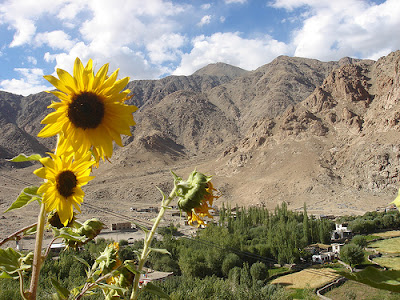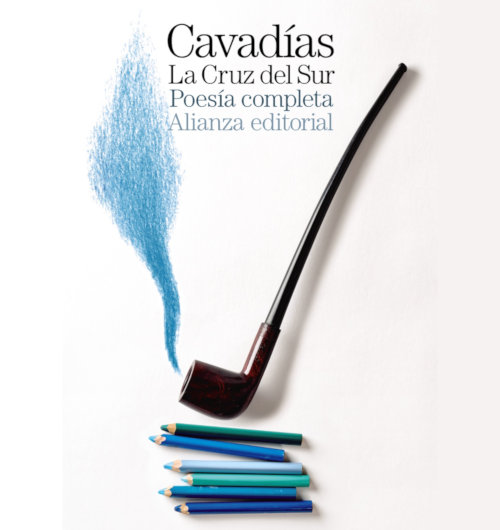Leh, Ladakh
It's lunchtime in Ladakh, and all the
 tourist places (with salads, pizza, and lasagne) are closed, boarded up for the winter. Where do you eat? What do you eat?
tourist places (with salads, pizza, and lasagne) are closed, boarded up for the winter. Where do you eat? What do you eat? Most days, I get a delicious vegetarian thali at Leh Chen Restaurant, which is just a tiny hole in the wall on Fort Road. It's run by a Nepali family from Sindhupalchowk who have 2 beautiful little girls.
A "thali" is kind of like the old cafeteria lunch tray, with separated sections. I get rice; a "dal" or lentil (black, yellow, green - it changes) for protein; two types of vegetables (often it's potato-peas and eggplant), 2 chapati & one papad (that's homemade bread for all you non-Indians), pickle (mmmm.....) and hot water. It is traditional to drink hot water all day long here. It's also part of Tibetan medicine. Everywhere there are Tibetans, there's "chu skor" or hot water being served in big thermoses....all day long, all year long.
In traditional north Indian fashion, they also give me a side dish of raw onions and green chili. I don't touch these. A South Indian thali would have mandatory yogurt included.
All that, plus refills on the lentils, rice and papad, for 45 Rupees (about $1.15).
But that is Indo-Nepali food. What about real Ladakhi food?
It's hard to find traditional Ladakhi food in any restaurant. Most of the tourist trade and restaurant biz is run by Tibetans, Nepalis, and Indians. They serve good Indian food like the above veg thali, or Tibetan stuff like thukpa noodle soup, then-tuk (another kind of noodle soup), mo-mos (dumplings), ting-mo (steamed bread) and butter tea. ("gur gur cha").
Since the Women's Alliance kitchen closed down due to lack of participation (they had great food!), and since the Ladakh Festival is over (there was one vendor there with authentic Ladakhi food), there is only ONE place in town to get actual Ladakhi fare.
The Aluya Restaurant (stands for All Ladakh Unemployed Youth Alliance) is run by a few women, in the middle of the town square and is one of the only places you can always, always count on being open, from about 8AM till 7PM.
Ladakhi food is a lot like Tibetan, with a few more vegetables. It is all very filling, and starchy, and based on either buckwheat, wheat or barley (sorry, I don't know for sure which is really being used. Translation problems).
Here are some tradtional Ladakhi dishes I have tried:
Chu Tagi: a sort of bow-tie shaped pasta filled with potato and served with chunks of carrots, potato and sometimes local greens (which they erroneously call "spinach...." --it's more like collard greens) in a sauce.
Drue: another wheat pasta with sauce of ground apricots. Drue was never available when I visited. Sounds yummy though....
Skyue: yet another pasta shaped like little caps or gumdrops, with same vegetables in sauce as Chu Tagi. Chu Tagi tastes better to me, though....
and my very favourite which is NOT available at Aluya right now is, I think, called
Tsu Tsu: --it is a buckwheat pancake, served either with homemade apricot jam (in breakfast time) or with dal and pickles at lunch time. Tsu Tsu is a sort of Ladakhi Dosa - a crepe-like bread.
Always available for breakfast, though, is the heavy dark Ladakhi pita-type pocket bread, "khambir." It's served piping hot with butter and locally made apricot jam.
The regional staple (all over the Tibetan plateau) is Tsampa - roasted barley flour. I have developed a genuine taste for Tsampa. It gives you a slow-energy release that is really helpful especially in cold weather. Tsampa looks like chalk and always reminds me of being a kid when I used to sneak unbaked Pillsbury biscuit dough off the counter. Or, a bit like eating Play-Doh (didn't you ever try to eat it? come on!!).
Tsampa is used for everything; I dump it in the namkeen tea (another name for gurgur cha or salty buttery tea) and stir it in to make kind of a grainy milkshake. In the same way it is dumped into Chang or home made barley beer for fortification. You can also stir it into yogurt (for breakfast), or into your noodle soup for extra thickening.
I know Tibetan refugees who crossed the mountains into Nepal with nothing but bags of tsampa powder. They mix it with water to make a paste and it's enough to sustain them.
Snack pack
All varieties (--except the really good ones pitted sweet ones that Dzomsa sells in season) - of dried apricots, including apricot nuts, as well as raisins, peanuts and sometimes cashews from Tamil Nadu , be bought in bulk on the street....along with that disgusting dried yak cheese. I don't know how anyone eats this cheese, which is dried into hard bits of stringy...hard stringiness. I can't chew it at all.
Dzomo (the female version of a Dzo, or yak-cow hybrid) butter is sold on the street from mangey looking barrels covered in fur. I can't figure it out; it really looks like they have chopped off a dzo's leg, hollowed it out and filled it with this rank butter. What is the fur for?
Of course, the person selling the dzomo butter is always a rugged country person who can't explain it to me in English, either, so the mystery continues. Dzomo butter definitely has a tang and a gamey smell that repels me.
I mentioned Seabuckthorn juice before. It is full of antioxidants, and very bitter so some sugar must be added for drinking. I have seen the packaged juice in other Indian states. The commercial name is "Leh Berry." I wonder how much antioxidant is actually remaining after processing, though. Unfortunately the places serving homemade juice are closed now and it's available only in the packaged form.
Apricot Jam, Apricot Juice, Apricot Nuts and Seabuckthorn juice could potentially all be major exports from Ladakh. The jam is just out of this world...I cannot go back to eating that horrible red food-colouring jam (supposedly it's "Mixed Fruit") they serve everywhere in India, ever again!
Vanishing Victuals
The sad thing is that it's all you can do to find this food, outside of a Ladakhi home, anymore. Even small restaurants in rural areas and shops run by Ladakhis are not likely to have these things (except dried apricots, which are in every shop).
What they are guaranteed to have is:
-packaged Maggi Noodles. Experienced Indian travelers will groan at this. It's the Indian equivalent of Ramen Noodles. Instant noodles with a flavour packet.
-Sugary Indian tea or chai
-Chappati
-Every shop has pre-packaged manufactured snacks (aloo bhujia, namkeens, moong dal etc) from mainland India, which are wrapped in shiny colourful mylar plastic. The streets and gutters are littered with them!














No comments:
Post a Comment